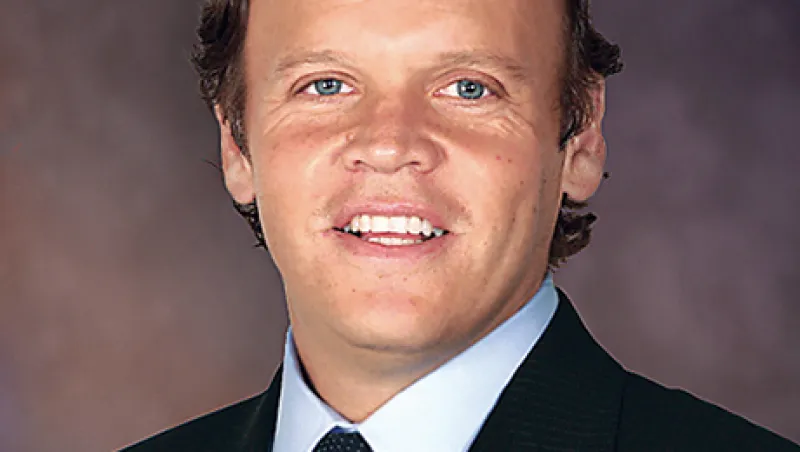The SPAC is back. Just ask Carlyle Group alumnus Mark Ein, who wants to reinvent special purpose acquisition companies as an alternative to private equity funds. In May, Ein raised $200 million in a Citigroup-led initial public offering for Washington-based Capitol Acquisition Corp. II, the second-largest IPO of a SPAC in the past five years.
Often touted — and maligned — as blank-check companies, SPACs are development-stage firms without specific business plans when they go public. But these acquisition vehicles resemble private equity funds in that institutions and individuals commit money before any investments are made, based on the sponsor’s reputation and demonstrated skill at finding opportunities.
SPACs offer a way for fast-growing private companies to go public without having to negotiate the registration process. “You’re effectively investing in an individual and in his or her ability as an operator to acquire a company and create value for shareholders,” says Philip Drury, New York–based co-head of equity capital markets for the Americas at Citi.
Citi has led two of the six SPAC deals that have raised a total of $2 billion this year. In July, Deutsche Bank Securities underwrote the IPO for Silver Eagle Acquisition Corp., a SPAC headed by media executives Harry Sloan, former chairman and CEO of Metro-Goldwyn-Mayer Studios, and ex–CBS Entertainment president Jeffrey Sagansky. Silver Eagle, based in Santa Monica, California, raised $325 million and is looking for media companies.
SPACs are a liquid alternative to private equity, which can lock up an investor’s money for eight to 12 years. Unlike private equity funds, they have access to public markets and debt capital. SPACs can also reach a broader set of investors, beyond big institutions. “This is a way to back an investment team that has a private equity mind-set but which also has public market liquidity,” Capitol Acquisition’s Ein says. The SPAC structure protects investors by letting them vote on the deals that management decides on and take their money back if they don’t approve the company’s direction. Thanks to those provisions, SPACs have been popular with hedge funds.
The redevelopment of the SPAC market since the financial crisis is in its early innings, Citi’s Drury says. SPAC IPOs peaked in 2007, with 65 deals that raised a combined $12 billion from investors seeking differentiated returns. Volume dropped off substantially after the crisis amid a retreat from risky assets. From 2010 to the present, 36 deals have come to market, raising $3.1 billion. According to Drury, SPACs are a “reemerging market, but we are seeing green shoots. Investors are looking for growth investments again.”
Capitol Acquisition II points to the success of Ein’s 2007 SPAC. Ein, who is also founder and CEO of Washington-based Venturehouse Group, which seeds start-ups, and was a principal at private equity firm Carlyle from 1992 to 1996, raised the first Capitol Acquisition Corp. just before the crisis. In October 2009 the SPAC merged with Two Harbors Investment Corp., a Maryland-based real estate investment trust that primarily invests in and manages residential mortgage-backed securities. Ein joined forces with Minnetonka, Minnesota–based relative-value hedge fund firm Pine River Capital Management, which has $13.6 billion in assets, to manage the REIT.
Just after the crisis, the SPAC was a great vehicle for investing in the hard-hit mortgage industry. “We jointly saw an opportunity to provide money to a sector at a time of capital scarcity,” Ein recalls. The original Capitol Acquisition raised $260 million from its IPO and now has a market capitalization of about $3.5 billion. Two Harbors is the third-largest mortgage REIT globally. For investors in the IPO, the SPAC has generated a 66 percent return as of late September.
Although Securities and Exchange Commission rules prohibit Ein from talking about specific companies with which Capitol Acquisition II could merge, he says he’s looking at businesses in industries where having access to capital is a weapon: “Companies in these particular industries that have access to capital will do well, while those that don’t, won’t.” He’s also looking at sectors such as technology and retail, where some players are growing quickly by disrupting the normal course of business.
Ein, 48, notes that SPACs fit well with what he’s learned about his own skills and the private equity industry over the past 20 years. Having worked for Goldman Sachs Group’s real estate and mortgage finance division from 1986 to 1989 and at Los Angeles–based private equity firm Brentwood Associates before moving to Carlyle, he says he wants to focus only on his best ideas. Private equity funds invest in many companies, thereby mitigating risk but also limiting upside potential. “In a fund they want diversification and you can’t be that concentrated,” Ein says. “But every now and then you find an exceptional opportunity where the risk-return profile is asymmetrical. I want to just do these.” • •
Read more about asset management.





